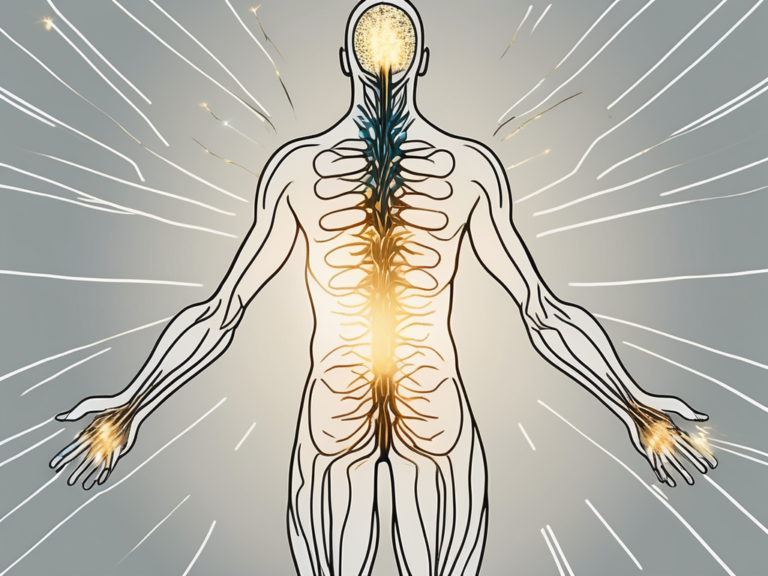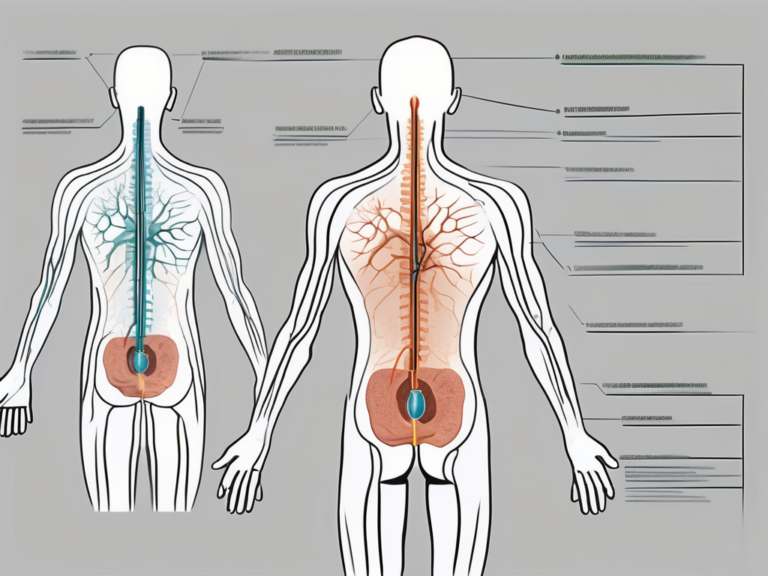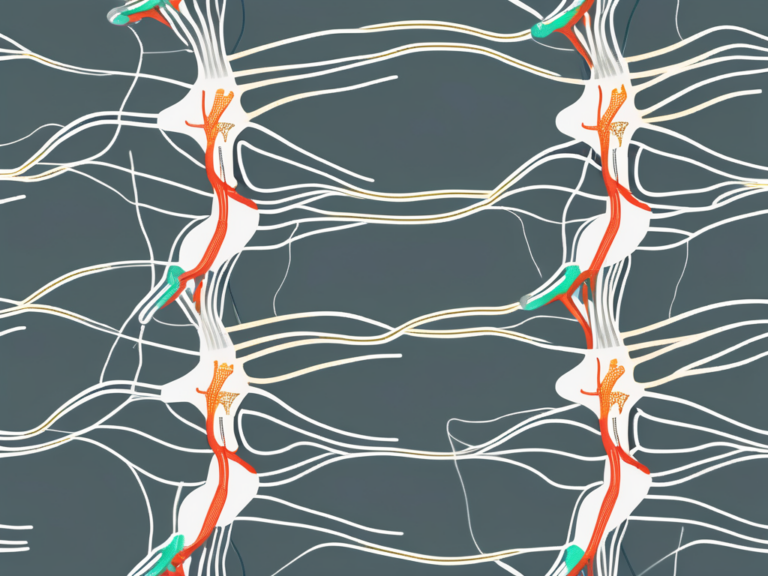What Is the Position of the Sacral Nerve?
The position of the sacral nerve is an essential aspect of human anatomy and physiology. Understanding the role, function, and location of this nerve is crucial for comprehending the complexities of the nervous system. In this article, we will explore the position of the sacral nerve, its function, and its impact on the human body.
Understanding the Sacral Nerve
The sacral nerve is a vital component of the peripheral nervous system, specifically the autonomic nervous system. It plays a significant role in the transmission of signals between the central nervous system and the lower body regions. To fully grasp the importance of the sacral nerve, we must delve into its definition, function, and anatomy.
Definition and Function of the Sacral Nerve
The sacral nerve refers to a bundle of nerves that emerge from the spinal cord’s sacral region, located at the base of the spine. These nerve fibers belong to the lower section of the spinal nerves, forming part of the lumbar-sacral plexus. The primary function of the sacral nerve is to facilitate the transmission of motor and sensory signals to and from the pelvic organs, lower limbs, and reproductive systems.
Motor signals transmitted through the sacral nerve allow for the contraction and relaxation of muscles in the pelvic region and lower extremities. This enables various movements, such as walking, running, and even intricate actions like dancing. Additionally, the sacral nerve plays a crucial role in controlling the bladder, bowel, and sexual functions.
Sensory signals carried by the sacral nerve provide feedback to the central nervous system, allowing individuals to perceive sensations in the pelvic region and lower limbs. These sensations include touch, pressure, pain, and temperature. The sacral nerve ensures that individuals can accurately perceive and respond to stimuli in these areas, promoting overall bodily awareness and coordination.
Anatomy of the Sacral Nerve
The sacral nerve comprises five pairs of spinal nerves, labeled S1 to S5. Each pair emerges from the corresponding sacral vertebra. These spinal nerves consist of both motor and sensory fibers, forming a complex network that extends throughout the pelvic region and lower extremities.
The motor fibers of the sacral nerve innervate various muscles in the pelvic region and lower limbs. These muscles include the gluteal muscles, which are responsible for hip movement and stabilization, as well as the muscles involved in walking, running, and maintaining balance. The sacral nerve’s motor fibers also control the muscles responsible for bladder and bowel control, ensuring proper functioning of these essential bodily processes.
On the other hand, the sensory fibers of the sacral nerve transmit information from the pelvic organs, lower limbs, and reproductive systems to the central nervous system. This allows individuals to perceive sensations such as touch, pressure, pain, and temperature in these areas. The sensory fibers of the sacral nerve are crucial for maintaining bodily awareness and providing feedback to the central nervous system for appropriate responses.
In conclusion, the sacral nerve is a complex and essential component of the peripheral nervous system. Its function in transmitting motor and sensory signals to and from the pelvic region, lower limbs, and reproductive systems is crucial for maintaining proper bodily function and coordination. Understanding the anatomy and function of the sacral nerve provides valuable insight into the intricate workings of the human body.
Locating the Sacral Nerve in the Human Body
Now that we have an overview of the sacral nerve’s role, let us explore its precise location within the human body. Understanding where this nerve originates and terminates is crucial for comprehending its functional significance.
The Sacral Nerve and the Spinal Cord
The sacral nerve roots arise from the sacral region of the spinal cord, specifically the sacral plexus. The spinal cord, a long, tubular bundle of nerves, extends down through the vertebrae, serving as the main pathway for transmitting signals between the brain and the rest of the body. The sacral nerves exit the spinal column through small openings called intervertebral foramina, which are located between adjacent vertebrae. These nerve roots then join the pelvic nerves, forming the sacral nerve.
The sacral plexus, where the sacral nerve roots originate, is a complex network of nerves located in the lower back region, just above the tailbone. It is formed by the merging of the ventral rami (branches) of the spinal nerves S1 to S4. These nerves carry both motor and sensory information, allowing for the control and perception of various bodily functions.
The Sacral Nerve and the Pelvic Region
Once the sacral nerves are formed, they proceed to travel through the pelvic region, branching out and connecting to various structures along the way. The nerve fibers in the sacral plexus innervate the muscles of the pelvic floor, including the bladder, bowel, and sexual organs. This intricate network allows for the coordination of muscle movement and the transmission of sensory information in the pelvic region.
Within the pelvic region, the sacral nerve plays a vital role in maintaining continence and controlling the functions of the urinary and digestive systems. It provides the necessary motor signals for the contraction and relaxation of the muscles involved in bladder and bowel control. Additionally, the sacral nerve carries sensory information from the pelvic organs, allowing for the perception of sensations such as bladder fullness and bowel movements.
Furthermore, the sacral nerve is also involved in sexual function. It supplies the nerves that innervate the sexual organs, enabling sexual arousal and orgasm. Dysfunction or damage to the sacral nerve can lead to various pelvic floor disorders, such as urinary or fecal incontinence, as well as sexual dysfunction.
In conclusion, the sacral nerve is a crucial component of the human body’s nervous system, playing a vital role in the control and coordination of pelvic functions. Its precise location within the spinal cord and its extensive connections in the pelvic region make it a key player in maintaining continence, controlling the urinary and digestive systems, and facilitating sexual function.
The Role of the Sacral Nerve in the Nervous System
Now that we have explored the position and anatomy of the sacral nerve, let us delve into its broader role within the nervous system. Understanding how this nerve connects to the central nervous system and its impact on lower body functions is essential in appreciating its implications for overall health and well-being.
The sacral nerve serves as a vital link between the peripheral and central nervous systems. Motor signals generated in the brain and the central nervous system travel down the spinal cord, ultimately reaching the sacral nerve roots. These signals are then transmitted to the targeted pelvic and lower limb muscles, enabling movements such as walking, running, and even simple tasks like sitting and standing.
But the role of the sacral nerve goes beyond just facilitating motor signals. It also plays a crucial role in the transmission of sensory signals from the pelvic organs and lower extremities to the brain. This communication informs us about our body’s position, helps us sense pain, and aids in maintaining bladder and bowel control.
Imagine the intricate network of nerves that work together to ensure our body functions properly. The sacral nerve, with its connection to the central nervous system, acts as a messenger, relaying information between the brain and the lower body. It is responsible for the coordination of movements, the perception of sensations, and the regulation of bodily functions.
Disruptions or damage to the sacral nerve can have profound effects on lower body functions and sensory impairments. For example, if the sacral nerve is injured, it can lead to difficulties in walking or even paralysis of the lower limbs. Sensory impairments can manifest as a loss of sensation or abnormal sensations in the pelvic region and lower extremities.
Furthermore, the sacral nerve’s impact on bladder and bowel control cannot be understated. It helps regulate the muscles involved in these functions, ensuring proper coordination and control. Any disruption to the sacral nerve can result in urinary or fecal incontinence, causing significant discomfort and affecting one’s quality of life.
It is important to recognize the significance of the sacral nerve in the overall functioning of the nervous system. Its intricate connections and multifaceted role highlight its importance in maintaining our physical well-being. By understanding the complexities of this nerve, we can appreciate the delicate balance required for optimal nervous system function.
Disorders Related to the Sacral Nerve
While the sacral nerve plays a critical role in maintaining optimal bodily functions, various disorders can affect its health and functioning. Understanding these common conditions, their symptoms, and the available treatment options is essential for individuals experiencing symptoms or seeking preventive measures.
Common Sacral Nerve Conditions
Several conditions can affect the sacral nerve, resulting in symptoms such as pain, numbness, muscle weakness, or urinary and bowel dysfunctions. Some common disorders include sacral nerve entrapment, sacral nerve root compression, and sacral radiculopathy. Sacral nerve entrapment occurs when the nerve becomes compressed or pinched, leading to pain and dysfunction in the lower back, buttocks, and legs. Sacral nerve root compression refers to the compression of the nerve roots as they exit the spinal cord, which can result in radiating pain, numbness, and weakness in the lower extremities. Sacral radiculopathy is a condition that occurs when the nerve roots in the sacral region become damaged or inflamed, causing pain, tingling, and weakness in the lower back, hips, and legs.
It is important to note that proper diagnosis and medical consultation are essential for accurately identifying and treating these conditions. A healthcare professional will conduct a thorough evaluation, which may include a physical examination, medical history review, and possibly imaging tests such as MRI or nerve conduction studies. These diagnostic tools help determine the underlying cause of the symptoms and guide the appropriate treatment plan.
Symptoms and Diagnosis of Sacral Nerve Disorders
The symptoms of sacral nerve disorders can vary depending on the specific condition and the affected nerve fibers. They may include pain radiating down the leg (sciatica), tingling or numbness in the lower limbs, difficulty controlling the bladder or bowel, or sexual dysfunction. Sacral nerve entrapment can cause localized pain in the lower back, buttocks, and legs, which may worsen with certain movements or activities. Sacral nerve root compression may result in shooting pain, weakness, and numbness that radiates from the lower back down to the feet. Sacral radiculopathy can cause a combination of symptoms, including lower back pain, hip pain, leg pain, and muscle weakness.
Accurate diagnosis involves a thorough medical history review, physical examination, and possibly imaging tests such as MRI or nerve conduction studies. During the medical history review, the healthcare professional will ask about the nature and duration of the symptoms, any previous injuries or medical conditions, and any family history of nerve disorders. The physical examination may include assessing the strength, sensation, and reflexes in the lower extremities, as well as evaluating the range of motion and stability of the spine. Imaging tests, such as MRI or nerve conduction studies, can provide detailed information about the structure and function of the sacral nerve and surrounding tissues.
If you experience any of these symptoms, it is recommended to consult with a healthcare professional for a proper evaluation and diagnosis. Early detection and treatment of sacral nerve disorders can help alleviate symptoms, prevent further damage, and improve overall quality of life. Treatment options may include medications to manage pain and inflammation, physical therapy to improve strength and flexibility, nerve blocks to alleviate pain, or in severe cases, surgical intervention to decompress or repair the affected nerve.
Treatment Options for Sacral Nerve Disorders
When it comes to treating sacral nerve disorders, there are various options available, tailored to each individual’s specific condition and severity. Non-surgical treatments are typically the first line of defense, aimed at relieving symptoms and addressing underlying causes. In more severe cases, surgical interventions may be necessary to correct structural abnormalities or alleviate nerve compression.
Non-Surgical Treatments for Sacral Nerve Issues
Non-surgical treatment approaches may include physical therapy, medication for pain management, nerve blocks, or targeted injections to reduce inflammation and relieve symptoms. Physical therapy plays a crucial role in the rehabilitation process, focusing on strengthening the muscles surrounding the sacral nerve and improving overall mobility. This can help alleviate pain and restore normal function.
Medication for pain management may involve nonsteroidal anti-inflammatory drugs (NSAIDs) to reduce inflammation and relieve discomfort. Additionally, certain medications, such as anticonvulsants or antidepressants, may be prescribed to help manage nerve-related pain and improve overall well-being.
Nerve blocks, a type of regional anesthesia, can provide temporary relief by blocking the transmission of pain signals along the sacral nerve pathway. This procedure involves injecting a local anesthetic or corticosteroid into the affected area, targeting the specific nerves responsible for transmitting pain signals.
In some cases, targeted injections, such as epidural injections, may be used to reduce inflammation and swelling around the sacral nerve. These injections deliver medication directly to the affected area, providing localized relief and promoting healing.
Furthermore, lifestyle modifications can play a significant role in managing sacral nerve disorders. Adopting a regular exercise routine, specifically focusing on exercises that strengthen the core muscles and improve posture, can help alleviate pressure on the sacral nerve. Practicing good posture throughout daily activities, such as sitting and standing, can also reduce strain on the nerve and promote overall spinal health. Additionally, implementing stress-management techniques, such as mindfulness meditation or yoga, can help reduce stress-related muscle tension and improve overall well-being.
Surgical Interventions for Sacral Nerve Disorders
When non-surgical treatments fail to alleviate symptoms or when structural abnormalities require intervention, surgical options may be explored. Procedures such as decompression surgeries, nerve repair, or nerve grafting may be recommended by a qualified surgeon.
Decompression surgeries aim to relieve pressure on the sacral nerve by removing or adjusting structures that may be compressing the nerve. This can involve removing bone spurs, herniated discs, or other obstructions that are impinging on the nerve pathway. By creating more space for the nerve to function properly, decompression surgeries can help alleviate pain and restore normal nerve function.
Nerve repair or nerve grafting procedures may be necessary in cases where the sacral nerve has been damaged or severed. These surgical interventions involve reconnecting or replacing damaged nerve fibers, allowing for the restoration of nerve signaling and function. Nerve repair techniques can vary depending on the severity and location of the nerve injury, and the specific approach will be determined by the surgeon based on individual circumstances.
It is important to note that surgical interventions involve certain risks and should be thoroughly discussed and considered in consultation with a medical professional. The decision to undergo surgery should take into account the potential benefits, risks, and expected outcomes, as well as the individual’s overall health and lifestyle factors.
In conclusion, understanding the position of the sacral nerve is essential for comprehending its vital role in the human body. This nerve, originating from the sacral region of the spinal cord, connects the central nervous system to the lower body structures, enabling necessary motor and sensory functions. Various disorders can affect the sacral nerve, impacting bladder and bowel control, muscle movement, and sensory perception. Seeking medical guidance and appropriate treatment options is crucial for individuals experiencing sacral nerve-related symptoms, as healthcare professionals can provide tailored solutions and comprehensive care for optimal recovery and overall well-being.




